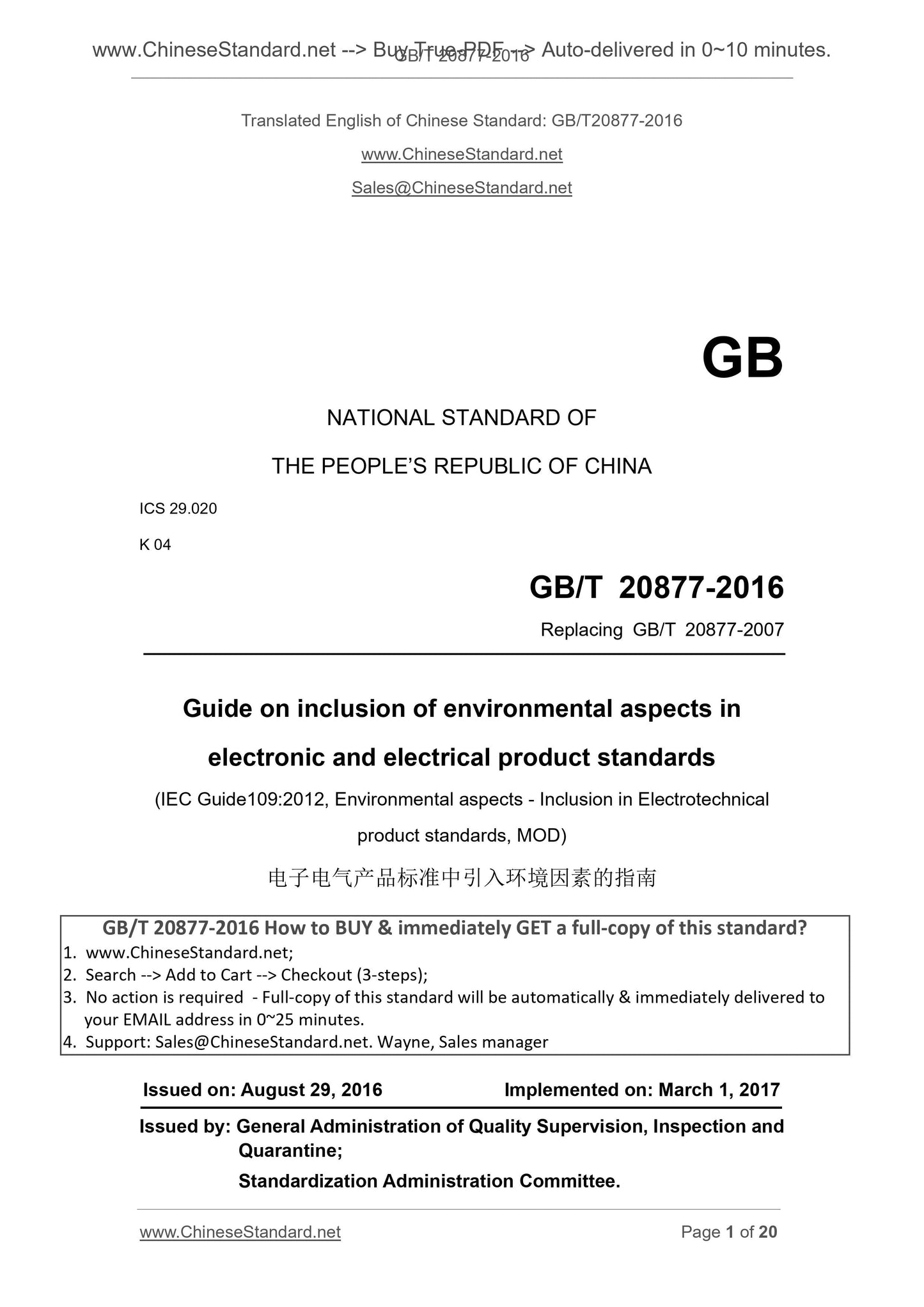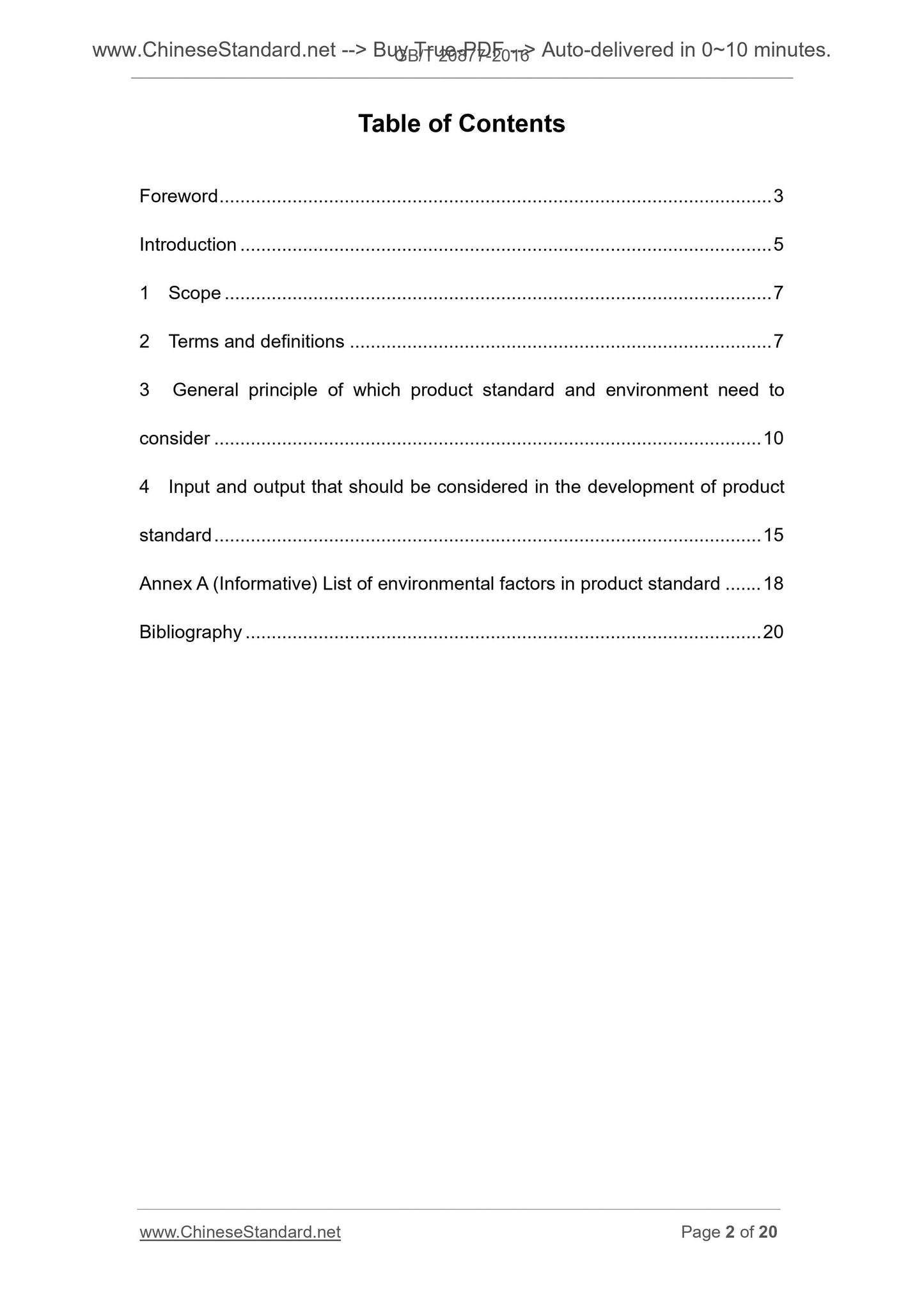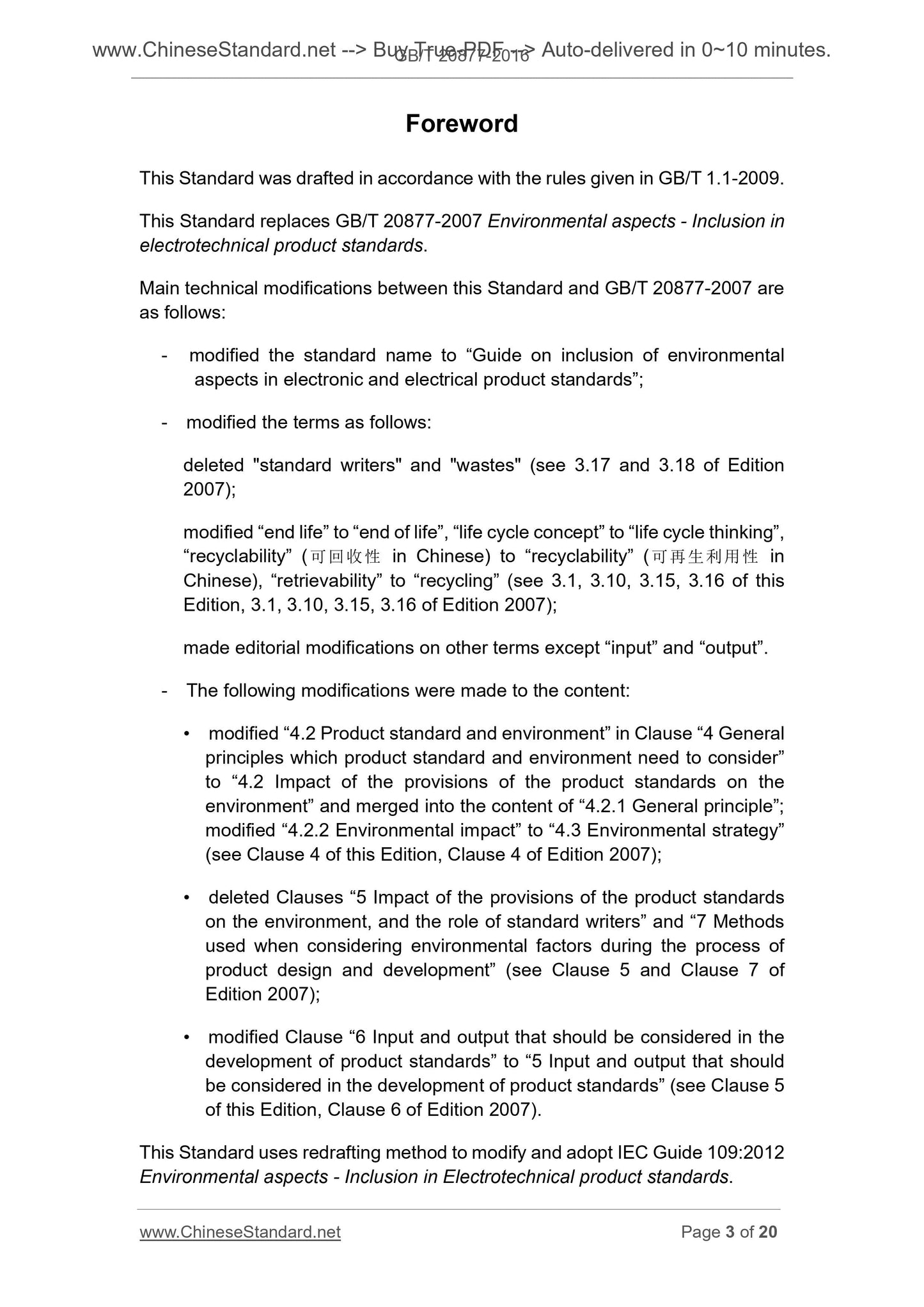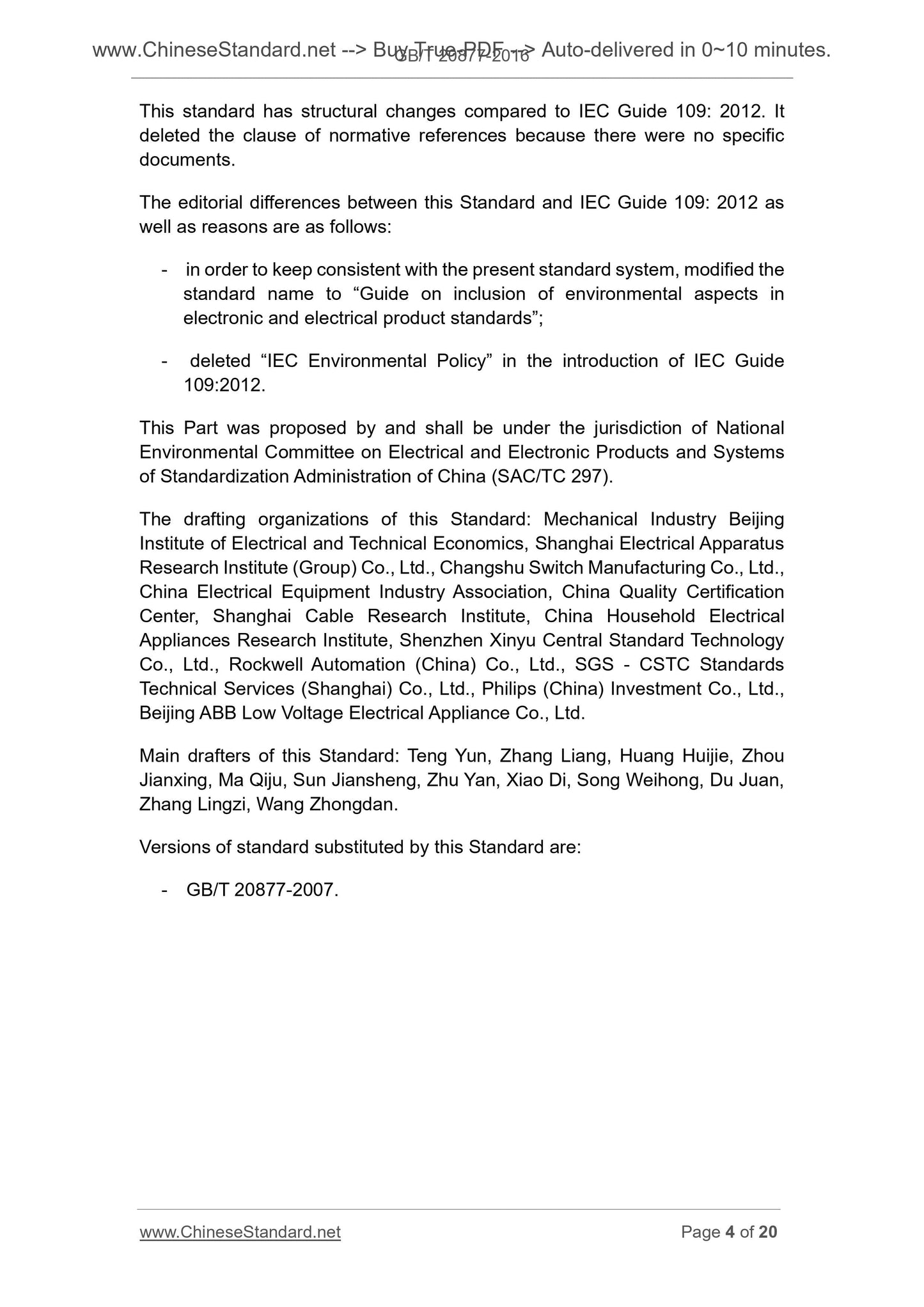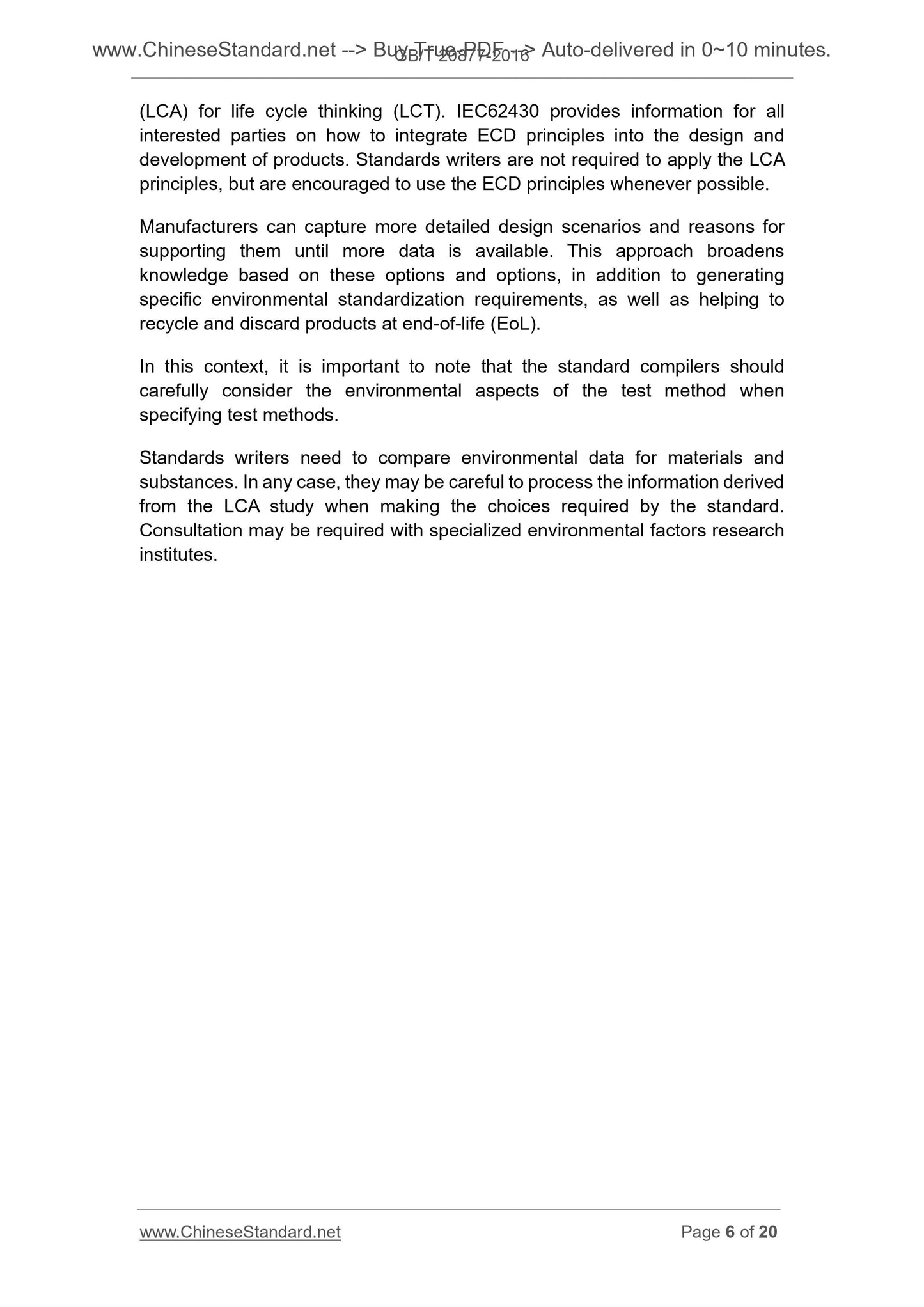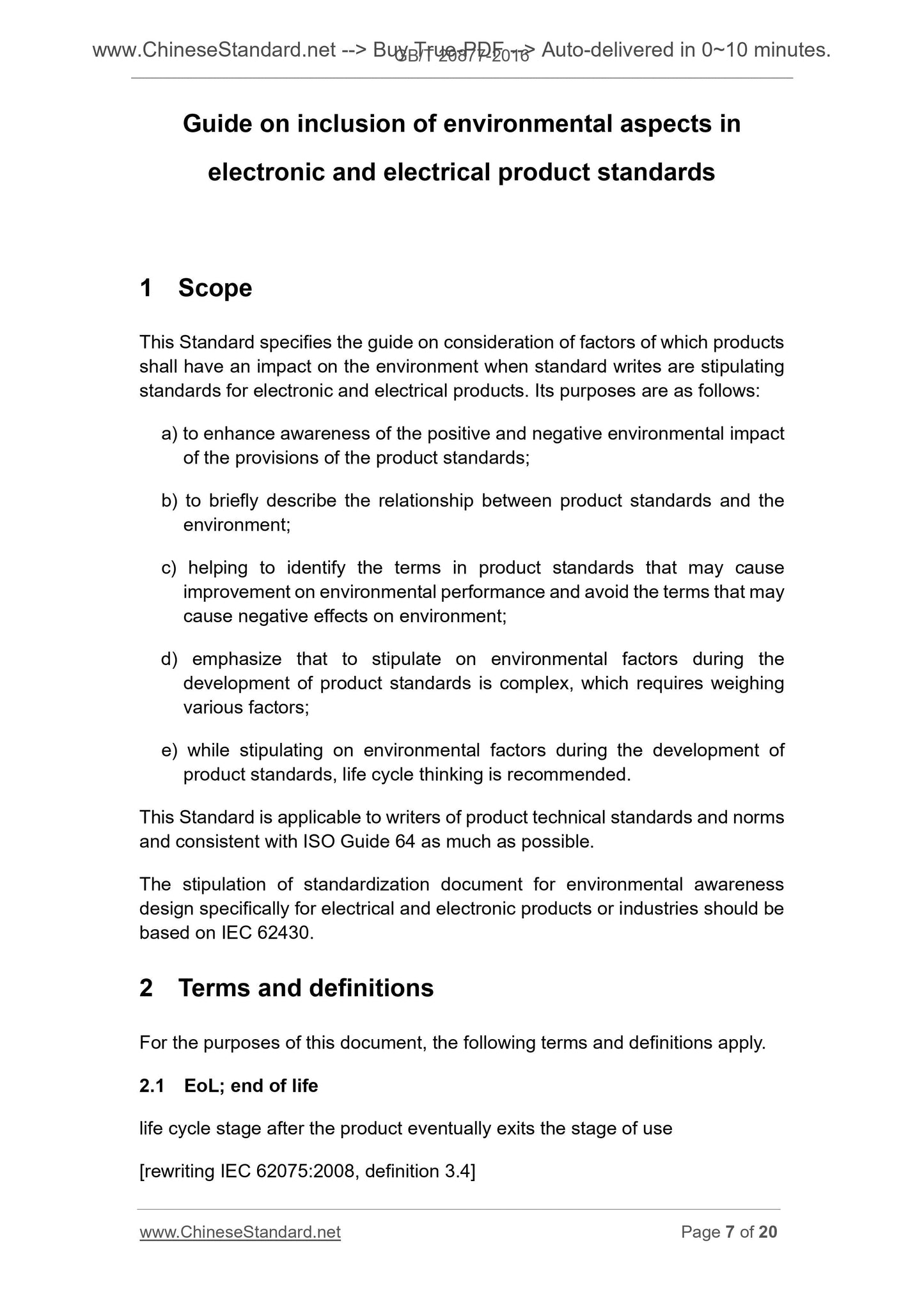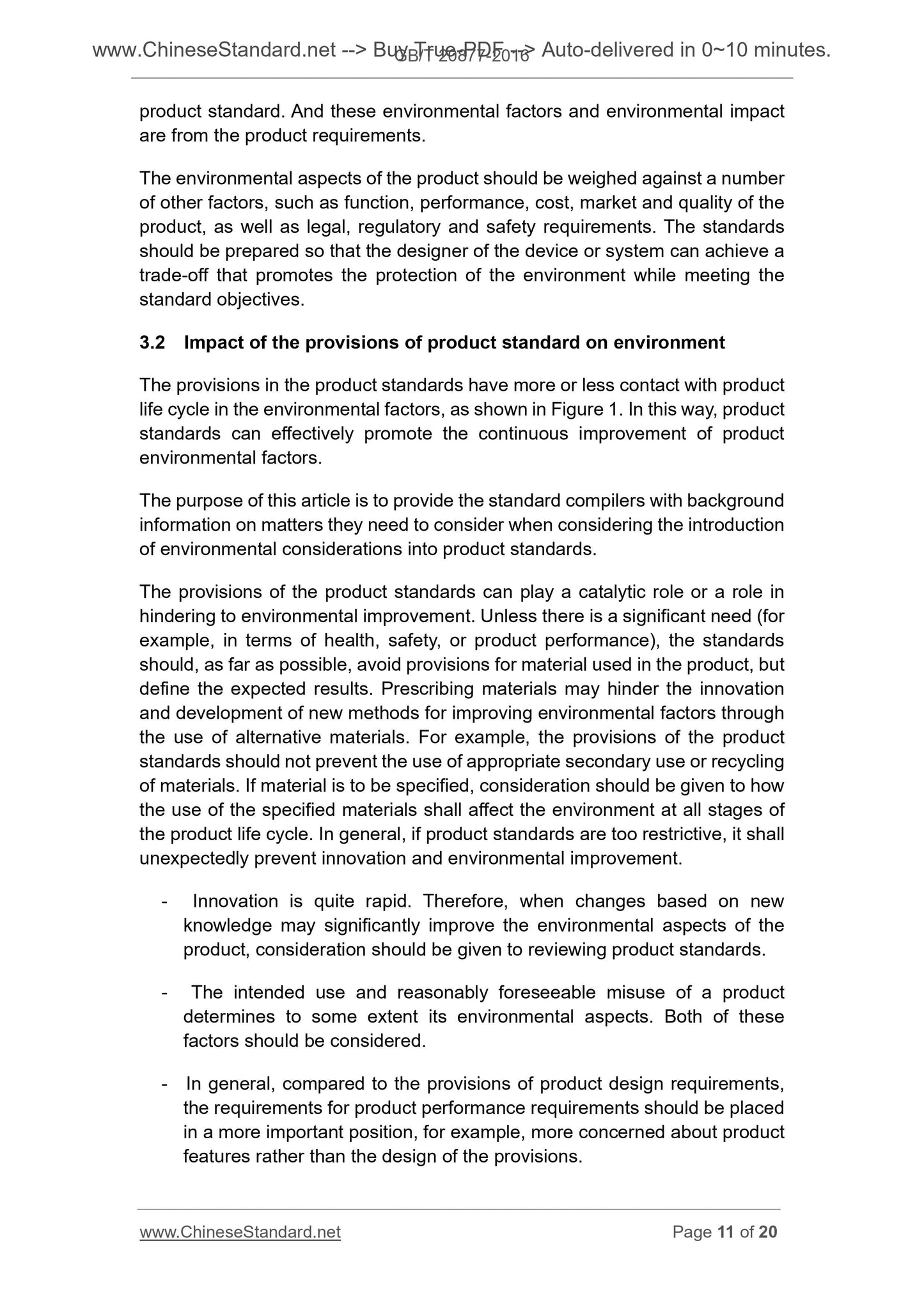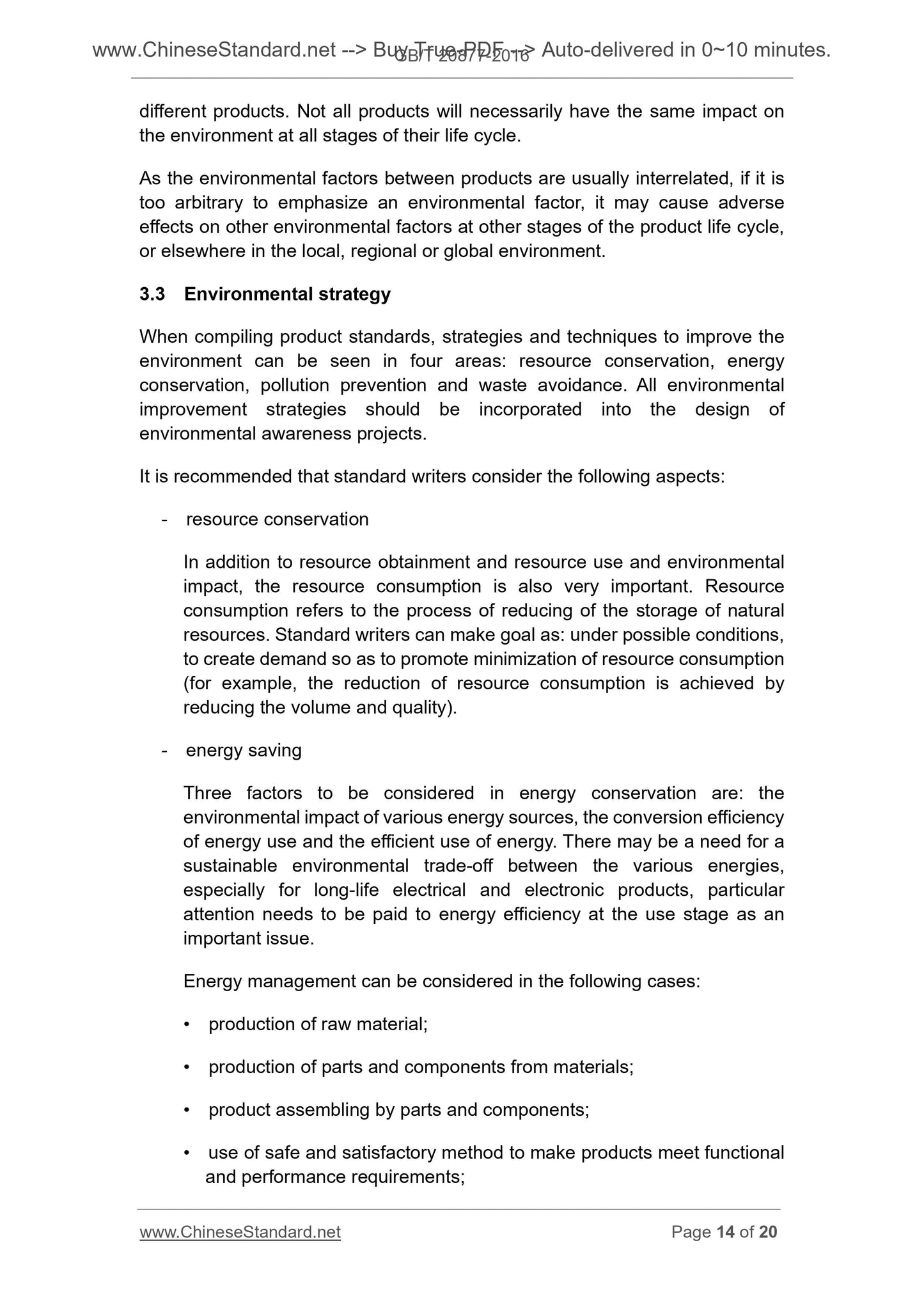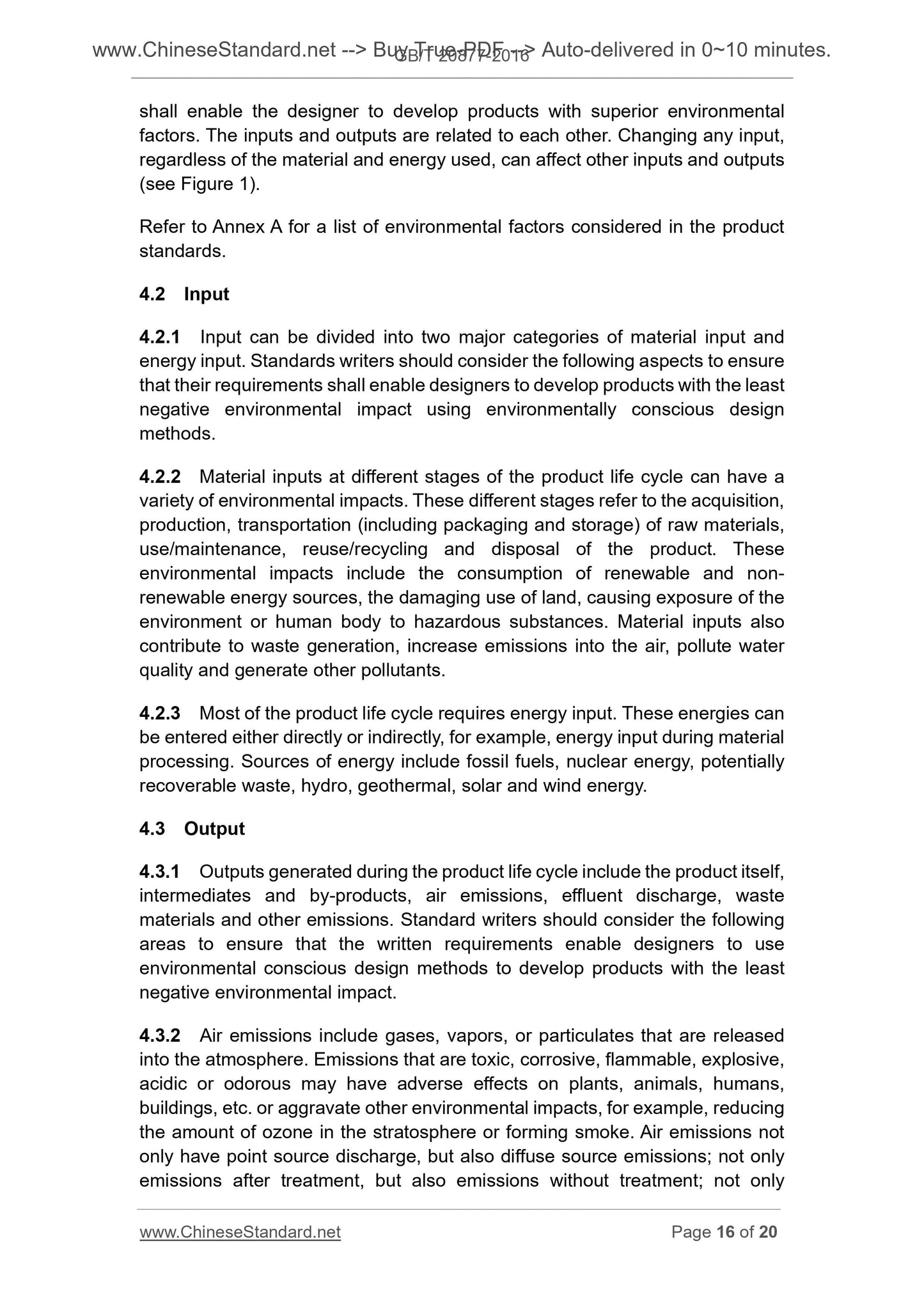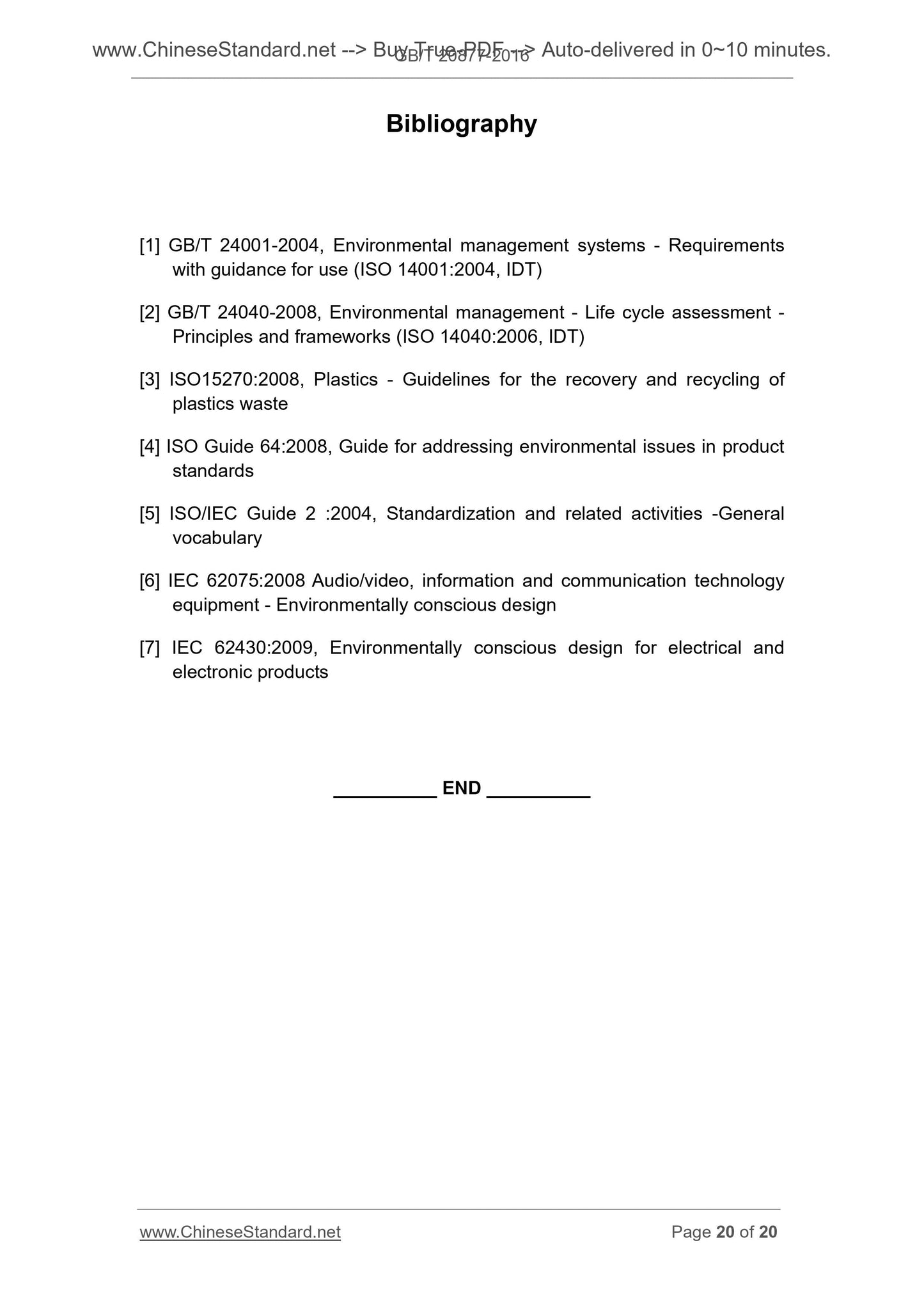1
/
of
10
www.ChineseStandard.us -- Field Test Asia Pte. Ltd.
GB/T 20877-2016 English PDF (GB/T20877-2016)
GB/T 20877-2016 English PDF (GB/T20877-2016)
Regular price
$90.00
Regular price
Sale price
$90.00
Unit price
/
per
Shipping calculated at checkout.
Couldn't load pickup availability
GB/T 20877-2016: Guide on inclusion of environmental aspects in electronic and electrical product standards
Delivery: 9 seconds. Download (and Email) true-PDF + Invoice.Get Quotation: Click GB/T 20877-2016 (Self-service in 1-minute)
Newer / historical versions: GB/T 20877-2016
Preview True-PDF
Scope
This Standard specifies the guide on consideration of factors of which productsshall have an impact on the environment when standard writes are stipulating
standards for electronic and electrical products. Its purposes are as follows.
a) to enhance awareness of the positive and negative environmental impact
of the provisions of the product standards;
b) to briefly describe the relationship between product standards and the
environment;
c) helping to identify the terms in product standards that may cause
improvement on environmental performance and avoid the terms that may
cause negative effects on environment;
d) emphasize that to stipulate on environmental factors during the
development of product standards is complex, which requires weighing
various factors;
e) while stipulating on environmental factors during the development of
product standards, life cycle thinking is recommended.
This Standard is applicable to writers of product technical standards and norms
and consistent with ISO Guide 64 as much as possible.
The stipulation of standardization document for environmental awareness
design specifically for electrical and electronic products or industries should be
based on IEC 62430.
Basic Data
| Standard ID | GB/T 20877-2016 (GB/T20877-2016) |
| Description (Translated English) | Guide on inclusion of environmental aspects in electronic and electrical product standards |
| Sector / Industry | National Standard (Recommended) |
| Classification of Chinese Standard | K04 |
| Classification of International Standard | 29.020 |
| Word Count Estimation | 11,123 |
| Date of Issue | 2007-01-23 |
| Date of Implementation | 2017-03-01 |
| Older Standard (superseded by this standard) | GB/T 20877-2007 |
| Regulation (derived from) | National Standard Announcement 2016 No.14 |
| Issuing agency(ies) | General Administration of Quality Supervision, Inspection and Quarantine of the People's Republic of China, Standardization Administration of the People's Republic of China |
Share
